
The Golden Pagoda of Arunachal Pradesh – A touch of Thailand in North East India
The Golden Pagoda of Arunachal Pradesh – A touch of Thailand in North East India A shining beacon of Theravada Buddhism in India, the Golden Pagoda of Namsai in the
A shining beacon of Theravada Buddhism in India, the Golden Pagoda of Namsai in the remote corners of Arunachal Pradesh, offers a breathtaking glimpse of Southeast Asia within the Indian landscape.

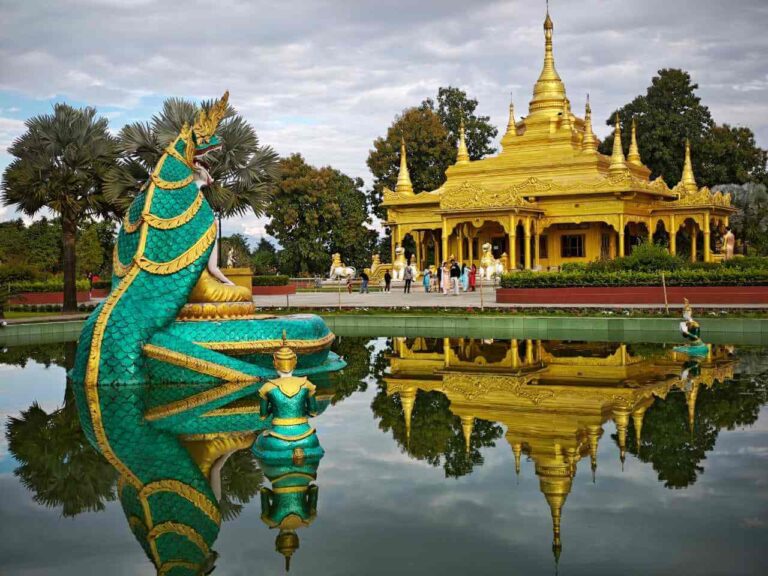
A monumental symbol of Northeast India’s spiritual identity is the magnificent Golden Pagoda of Namsai Arunachal. Locally known as ‘Kongmu Kham’, the Golden Pagoda temple is a Theravada Buddhist monastery built in the elegant Burmese-Thai style. Since its completion in 2010, it has become a major pilgrimage destination and a key site for worship, monastic learning, and international Buddhist exchange. The temple offers a touch of Thailand and Myanmar in Northeast India with its striking architecture and Theravada traditions echoing the elegance of Southeast Asian temples.
The Golden Pagoda of Arunachal Pradesh is located in the Tengapani Chongkham area of Namsai district in eastern Arunachal Pradesh. Set amidst lush greenery, it lies close to the Tengapani river (a tributary of the Lohit river) which adds to the peaceful and scenic charm of the surroundings. The area is part of the rich Lohit-Manabum-Tengapani forest belt, known for its biodiversity, with dense vegetation, bamboo groves, and vast river plains.
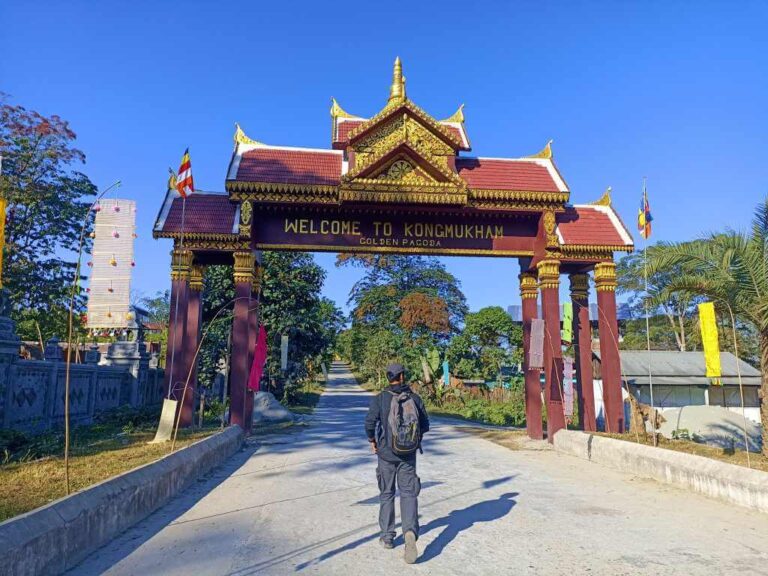
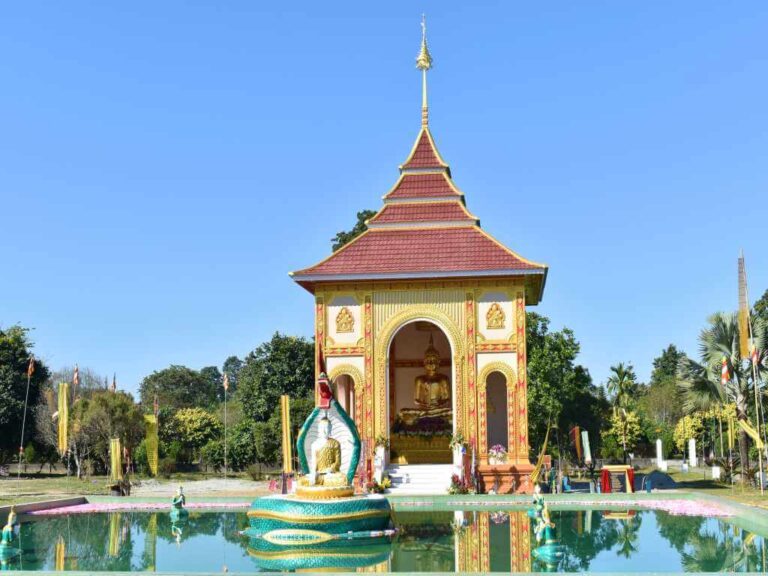
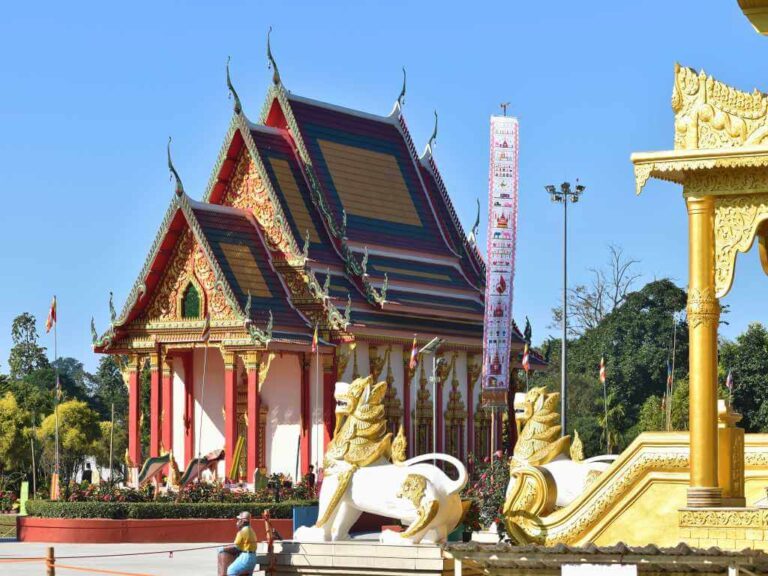
The Kongmu Kham is a powerful symbol of the region’s enduring Theravada Buddhist faith and the rich heritage of the Tai-Khampti-Singpho people. The monastery’s stunning architecture draws inspiration from Myanmar and Thailand, with gilded spires, intricate carvings, and a large bronze Buddha. The bronze statue of Lord Buddha in meditation is said to be a revered offering from Venerable Prakhu Pabhavana, the chief monk of Wat Aranjikavas in Thailand. Surrounded by landscaped gardens and monastic quarters, the temple complex is spread over 20 hectares of land. It serves as a venue for local festivals, international Buddhist conferences, meditation retreats and various cultural exchange programs. The pagoda complex houses a spacious shrine hall, a meditation hall, a guest house, a library, and a monastery living quarters for the monks. There is also a centre for cultural research of the Tai Khampti-Singpho tribes that call the Namsai region their homeland.
The cultural landscape of Namsai region in eastern Arunachal Pradesh is shaped by the migration and heritage of its two prominent communities—the Tai Khamptis and the Singphos. The Tai-Khamptis migrated through Upper Myanmar in the 18th century before settling in the Lohit valley and Namsai regions of eastern Arunachal Pradesh. Their culture, language, and religious practices reflect strong Burmese and Thai influences. The Singphos, ethnically related to the Jingpo or Kachin people of Myanmar, are said to have arrived earlier – between the 13th and 16th centuries – through the Patkai Hills. While traditionally animist in their beliefs, some Singphos later adopted Buddhism. Both these local tribal communities maintain rich cultural identities rooted in Southeast Asian traditions.
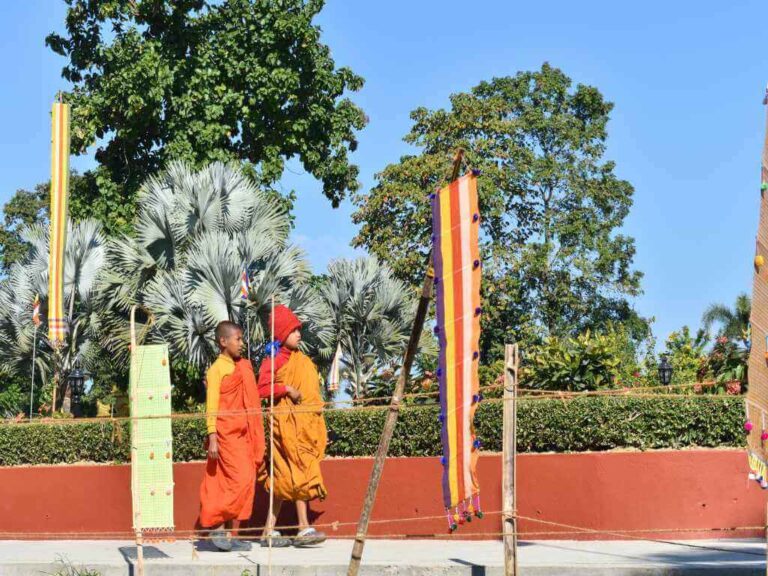
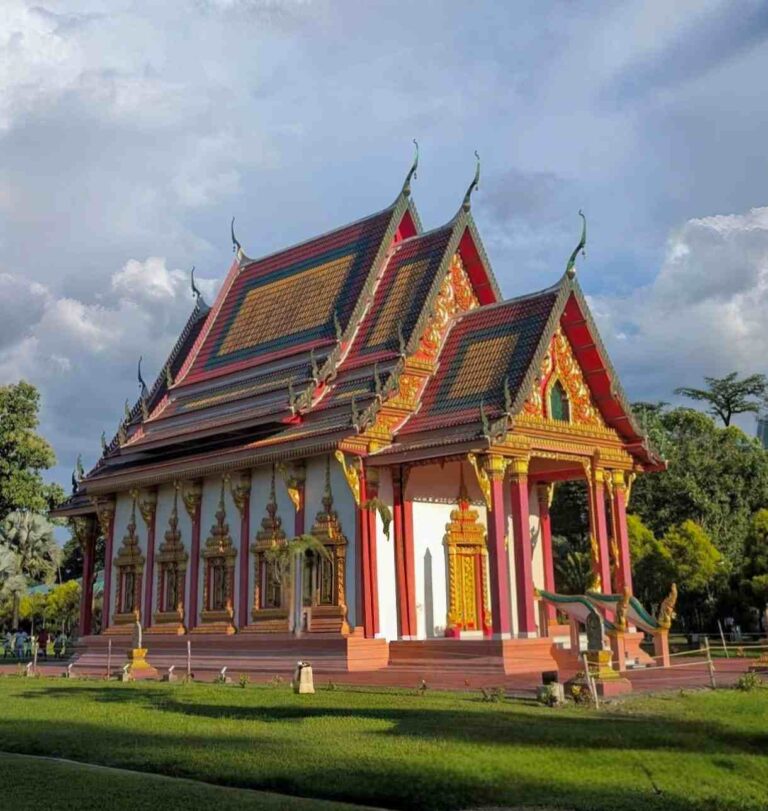
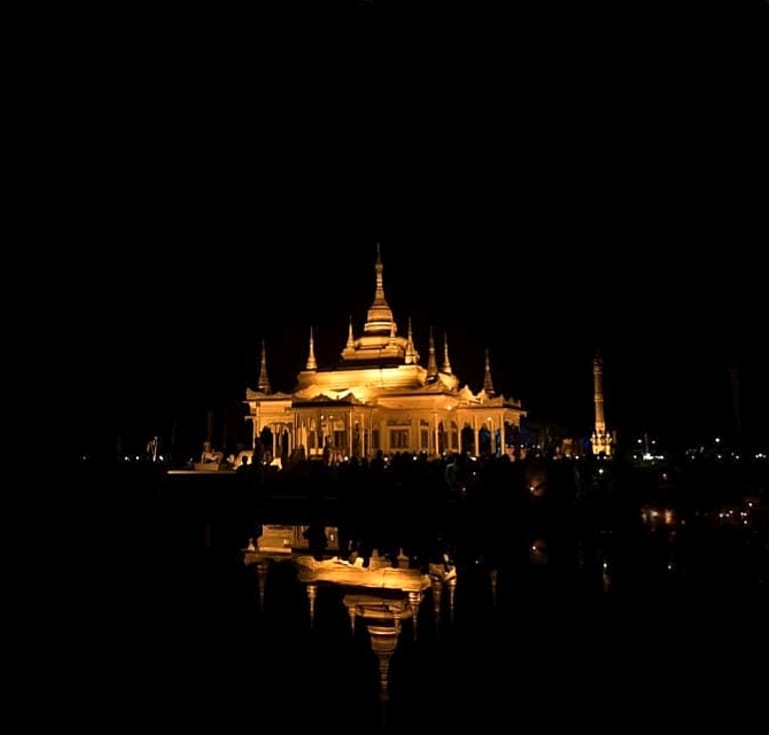
The Golden Pagoda of Arunachal Pradesh serves as a spiritual and cultural anchor for both the Tai Khampti and Singpho communities. Practiced mainly by these minority tribal communities of the state, the traditions and beliefs of Theravada Buddhism finds a vibrant expression at the Kongmu Kham. Over the years, it has become one of the few prominent centres of Theravada sect of Buddhism in India. While the tradition is widespread in Southeast Asia and Sri Lanka, it is relatively rare in India, where Mahayana and Vajrayana schools are more common. Translated as ‘the way of the elders’, it is the oldest surviving form of Buddhism in the world and uses ancient and original Pali scriptures from Buddha’s time. Eastern Arunachal’s Theravada Buddhists are ethnically, culturally, and linguistically closer to the Buddhists of Myanmar, Thailand, Laos, and Cambodia.
Merging Thai-Burmese styles with deep local devotion, the Golden Pagoda of Namsai Arunachal is a must-visit spiritual gem. It is a luminous embodiment of Northeast India’s rich Buddhist heritage. Drawing monks and devotees from India and abroad, it has evolved into more than just a sacred site – it is now a thriving centre of Buddhist learning and stands as a shining beacon of faith and local cultural pride. The Golden Pagoda can be covered on the way to Dong Valley Tour and in few of our other Offbeat Arunachal tours and experiences. Travellers interested to explore this iconic monastery and experience the local Tai-Khampti culture can join the one of our East Arunachal experiences. To craft your own unique travel stories in the land of dawn-lit mountains or personalize as per your family’s/group’s interests and preferences, please connect with us.
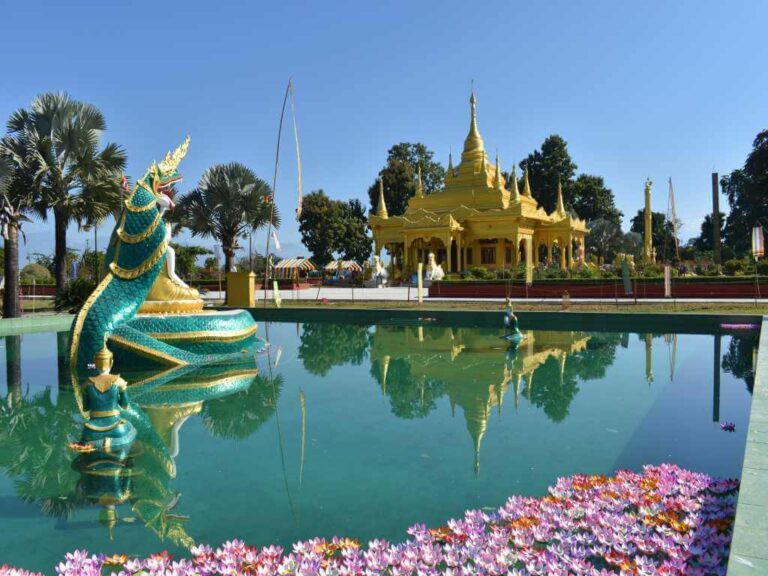

Contributed by our team of experiential travel experts, explorers and storytellers.

The Golden Pagoda of Arunachal Pradesh – A touch of Thailand in North East India A shining beacon of Theravada Buddhism in India, the Golden Pagoda of Namsai in the

James Burke’s Kashmir of 1960: A legendary photojournalist’s journey through the vale Explore Kashmir through the vintage lens of James Burke – the legendary writer, war correspondent and a distinguished

Secrets of the Stones: The Ancient Rock Carvings of Padum Zanskar Valley Amidst the rugged, isolated landscapes of Zanskar Valley, the echoes of ancient prayers still seem to linger in

Suru Valley Ladakh – featured in National Geographic’s ‘Best of the World’ 2025 List Suru Valley in Ladakh is the only destination from India to be featured in National Geographic’s list ‘Best of

Black-Necked Crane – The state bird of ladakh that brings you good luck Black-Necked Crane – rare alpine bird of Ladakh is also a cultural icon in the Trans-Himalayas

The Best hotels in Gangtok Sikkim – unveiling the top Luxury escapes A Guide to the Finest Luxury Hotels in Gangtok, Sikkim – all offering grand views of Mt. Kanchenjunga